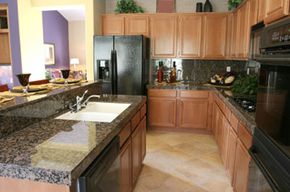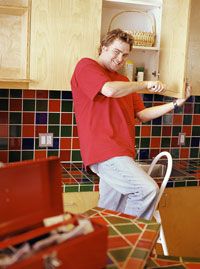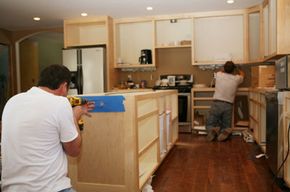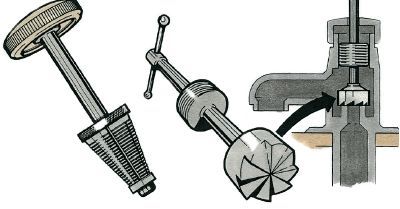Your home is your castle -- it's where the heart is. At least that's how the old sayings go. For many people, it may be their most substantial financial investment. Even though the housing market is slumping, it won't stay that way. Hanging onto that classic craftsman in the up-and-coming neighborhood of your chic, growing city will most likely mean a good return on your investment one day. Even if you didn't buy as part of an investment strategy, your home is a safe haven from the stresses of work and the outside world.
Kitchen Decor Image Gallery
Inside your castle lays the "heart of the home" -- the kitchen. If you've ever hosted a party, then you know that for some reason most of the action takes place in the kitchen. Take a look around your kitchen. Are you happy with what you see? Did the previous owners lack all sense of style and good taste? Now look specifically at the cabinets. Are you embarrassed to stow your expensive china behind their flimsy, stained doors? Have you
Advertisement
Whether you decide to paint or reface, putting a fresh look on those tired old cabinets is a cheap way to update your kitchen. And if you plan on flipping the house for a profit, resurfacing provides you with the maximum return on your "sweat equity." Refacing your cabinets costs a fraction of what buying and installing new ones would, and you can do it yourself over a weekend. Painting is even cheaper and easier than refacing, and it's possible that you can finish the job in a full day's work.
In this article, we'll help you decide whether or not you're a good candidate for resurfacing and then walk you through the steps for refacing and painting your cabinets.
Advertisement





